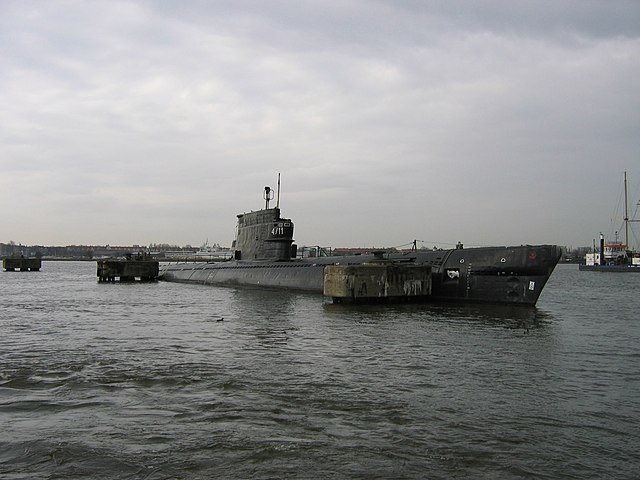The Soviet Navy's Project 611 were one of the first Soviet post-Second-World-War attack submarines. They were similarly capable to the American GUPPY fleet-boat conversions. They were a contemporary of the Whiskey-class submarines and shared a similar sonar arrangement. Like most conventional submarines designed 1946–1960, their design was influenced by the German World War II Type XXI U-boat.
Zulu-class submarine
Type XXI submarines were a class of German diesel–electric Elektroboot submarines designed during the Second World War. One hundred and eighteen were completed, with four being combat-ready. During the war only two were put into active service and went on patrols, but these were not used in combat.
U-2540 in wartime configuration and exhibited at the Maritime Museum in Bremerhaven. It is the only floating example of a Type XXI U-boat.
Construction consisted of nine prefabricated sections
U.S. Navy diagram of a Type XXI U-boat. Note the teardrop-shaped fairing for the large hydrophone array beneath the bow and the wasp-waist pressure hull. The large sonar array and its housing did slow the boat down, but its placement and size allowed for a very sensitive system to be installed, and gave it near-360 degree coverage around the submarine.
Three Type XXI U-boats and one Type VII U-boat moored at Bergen, Norway (May 1945). The Type XXI in the middle is U-2511





